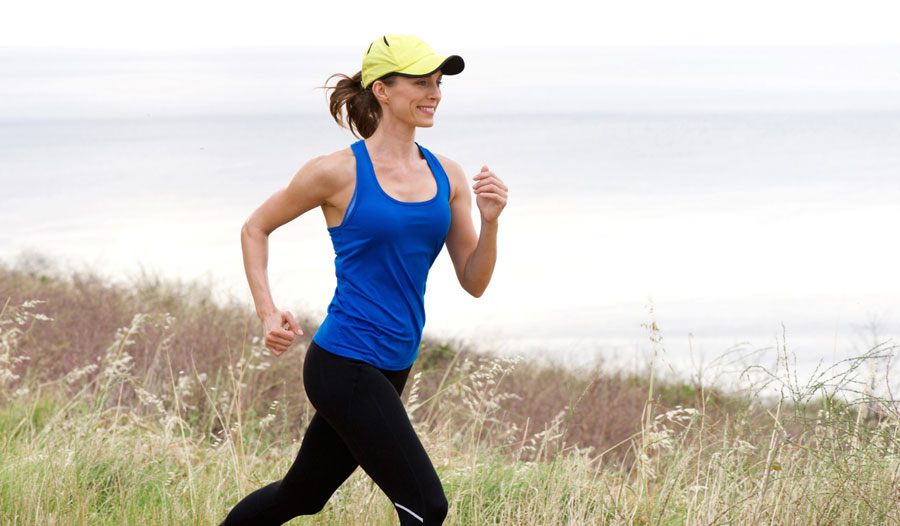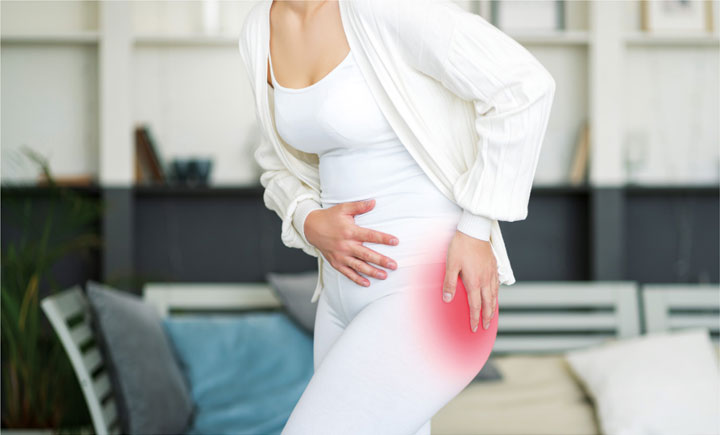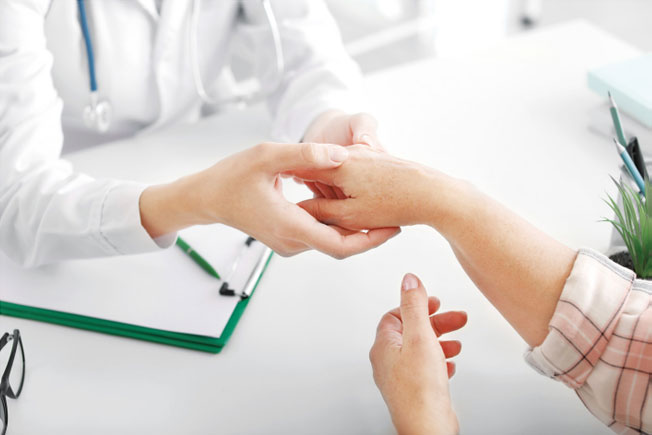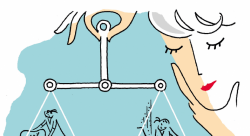 Healthy bones are a crucial aspect of our overall health and wellbeing. They form the structural framework of our bodies, providing support, mobility and protection for vital organs. However, bone health is often overlooked until there is a problem, such as a fracture, arthritis or osteoporosis. In the UK this has become a significant public health issue, affecting millions of people.
Healthy bones are a crucial aspect of our overall health and wellbeing. They form the structural framework of our bodies, providing support, mobility and protection for vital organs. However, bone health is often overlooked until there is a problem, such as a fracture, arthritis or osteoporosis. In the UK this has become a significant public health issue, affecting millions of people.Osteoporosis is the most common bone disease, characterised by low bone and deterioration of bone tissue, leading to an increased risk of fractures, particularly in the hips, spine and wrists. According to the Royal Osteoporosis Society, over three million people in the UK are estimated to have osteoporosis, and more than 500,000 fractures occur each year due to the condition. These fractures not only cause pain and disability but also impose a considerable economic burden on the NHS, with an estimated cost of £4.4 billion a year.

The UK National Screening Committee recommends that women over 65 are screened for osteoporosis using a bone mineral density scan. However, a screening programme has not been widely implemented, and many women are not aware of the risk. There is a need for increased awareness and education about osteoporosis, including risk factors, prevention strategies and treatments.
 There are various initiatives aimed at improving bone health, such as education and screening programmes. The Royal Osteoporosis Society is a charity dedicated to the prevention, diagnosis of and treatment of osteoporosis, as well as funding research into the disease.
There are various initiatives aimed at improving bone health, such as education and screening programmes. The Royal Osteoporosis Society is a charity dedicated to the prevention, diagnosis of and treatment of osteoporosis, as well as funding research into the disease.Stay active
Osteoarthritis is the most common type of arthritis in the UK, and most often develops in people who are in their mid-40s or older. While it is more common in women and people with a family history of the condition, it can occur at any age as a result of an injury or be associated with other joint-related conditions, such as gout or rheumatoid arthritis.
Osteoarthritis initially affects the smooth cartilage lining of the joint, making movement more difficult than usual and leading to pain and stiffness. Once erosion of the cartilage has begun, the tendons and ligaments have to work harder, often causing swelling and the formation of bony spurs called osteophytes. In severe cases the erosion of the cartilage can lead to bone rubbing on bone, which in time alters the shape of the joint, forcing the bones out of their normal positions. The most commonly affected joints are those in the hands, spine, knees and hips.
Less common than osteoarthritis, rheumatoid arthritis often starts in people aged between 30 and 50 years old. The body’s immune system targets affected joints, which leads to swelling and pain. Initially affecting the outer
covering of the joint, this can spread, often resulting in a change of the joint’s shape. This may cause the bone and cartilage to break down. Women are more likely to be affected than men.
Rheumatoid arthritis often starts in the small joints of the hands and usually starts with pain. It’s important to be diagnosed quickly, and there are simple blood tests and X-rays that your GP can arrange. Early treatment can prevent it getting worse and causing debilitating joint damage.
Physical activity is very important for maintaining healthy bones. Weightbearing exercises, such as walking, running and weightlifting, can help build and maintain bone density. The government recommends that adults undertake at least two-and-a-half hours of moderate-intensity physical activity per week, including activities to improve muscle and bone strength.
Not surprisingly, smoking is a significant risk factor for osteoporosis. It not only impairs the body’s ability to absorb calcium but also reduces bone density. Additionally, smoking increases the risk of fractures, especially in the hip and spine.
Excessive alcohol consumption can also have a negative impact on our bones, as it interferes with the body’s ability to absorb calcium. It is recommended that adults should not exceed 14 units of alcohol (10 small glasses of wine or six pints of medium-strength beer) a week, and should spread their consumption over several days.
 Diet is key
Diet is keyEating and drinking the right things can help support your bone health throughout your life.
Calcium and vitamin D are essential for maintaining healthy bones. Calcium is a mineral that is needed for bone formation, while vitamin D helps the body absorb calcium from our food. A diet that is low in calcium and vitamin D can lead to poor bone health and increase the risk of osteoporosis. The recommended daily intake of calcium for adults is 700mg a day, increasing to 1,200mg a day for women over 50 and men over 70. The recommended daily intake of vitamin D for adults is 10 micrograms a day. It is made naturally in the skin by sunlight, so during the autumn and winter months a supplement may be necessary.
In addition to calcium and vitamin D there are many other vitamins, minerals and nutrients that are vital to keeping your bones strong. If you eat a balanced diet you are probably getting everything you need. It is important to include foods from all four main food groups: fruits and vegetables, carbohydrates (bread, pasta and cereals), dairy and protein, such as eggs, beans, fish and meat.
Technically, no food is bad for the bones, but some are best enjoyed in moderation. Some people believe that foods high in protein can cause acidity in the bloodstream. If this happens your body might try to neutralise the acidity by drawing calcium salts from your bones, which theoretically could cause them to lose strength. One simple way to counter this is to eat plenty of fruit and vegetables, which may help to balance out the acid-forming foods.
It is important to be aware that high-caffeine consumption can increase the amount of calcium lost in urine. If you do not consume enough calcium to replace this, it could lead to your bones losing strength. While this is not likely to have a big effect, it would be wise to consider not having more than four cups of coffee a day, particularly if you prefer stronger ground coffee to instant. Tea also contains caffeine, but other substances in it, such as flavonoids, counteract its effects.
Fats are needed to support the health of our bones, but too much saturated fat could cause them to lose strength. It is not clear why this is, but it might be because high-fat diets are low in other important nutrients.
Excess salt can cause you to lose calcium in your urine. It is unclear if this could lead to bones losing strength and therefore an increased risk of a breakage.
However, it is still worth being aware of your salt intake so you can ensure it is within healthy limits. The Department of Health recommends adults have no more than 6g of salt per day (about a teaspoon). But beware! Salt is often hidden in many foods such as bread, cereals, cooked meats, stock cubes and ready meals. It can be difficult to adjust if you are used to salty food, but you could try tickling your tastebuds with pepper, herbs or even chilli.
An integral part of our bone structure is cartilage, the cushion of our joints.
Naturally produced by our bodies, over time cartilage can wear down, resulting in pain and difficulty with movement. Research has shown that taking glucosamine could slow down the degrading of cartilage and reduce inflammation in our joints. When coupled with methylsulfonylmethane (MSM) it can also reduce stiffness. Hyaluronic acid, turmeric and MSM are considered to be equally important to keep joints lubricated.
Turmeric is an anti-inflammatory which, in addition to helping our joints, can boost natural immunity and overall health.
MSM is a potent anti-inflammatory used to treat osteoarthritis, rheumatoid arthritis and tendonitis. It can also benefit gastrointestinal disorders such as constipation and diverticulosis.
Hyaluronic acid helps to lubricate joints, resulting in less pain and greater flexibility of movement.
At the end of the day, keeping our bones healthy is often simply a matter of common sense. As long as we keep mobile and eat the right things we won’t go far wrong. After all, as has been said many times, little and often and a little bit of what we fancy does no harm.
♦ Pictures: Adobe Stock







